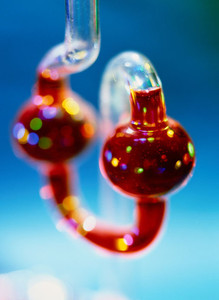The life cycle of a biosimilar, like any biological, starts with research and development, then manufacturing, and is followed by regulatory evaluation of quality, safety and efficacy for both licensing and post-licensing oversight. Once licensed, a biosimilar is an individual product and post-licensing evaluation should be carried out like any other biological. The only difference for a biosimilar is that regulatory approval relies on the safety and efficacy data and knowledge gained during the development and licensing of an originator, or reference product.
Life cycle and regulatory evaluation of biosimilars
Biosimilars/Research
|
Posted 15/06/2018
 0
Post your comment
0
Post your comment

During approval of biosimilars the concept of extrapolation is often used. This concept is not new to regulators or manufacturers. It is an established scientific and regulatory principle that has been exercised for many years, for example, in considering changes to manufacturing processes of originator biologicals. Prescribers, such as physicians and clinicians, tend to judge the safety and efficacy of medicines using clinical trial data.
Authors Hye-Na Kang and Ivana Knezevic from the World Health Organization (WHO) point out that although clinical data is important, it is a mistake to overlook the extensive data on the characteristics of a medicine derived using the state-of-the-art, comparative, analytical methods that underlie biosimilar development programmes [1]. They also point out that usually, analytical assessments are more sensitive for detecting differences between, or changes in, products than the endpoints used in clinical trials. Thus, a biosimilar with chemical, physical and biological attributes that are highly similar to those of the reference product would be expected to have the same pharmacological characteristics as the reference product and a similar safety and efficacy profile for every clinical indication.
Manufacturing processes are often altered after regulatory approval and medicines can undergo changes during their product life cycle. However, when it comes to biologicals it is often said that ‘the process is the product’. Therefore, it is very important that any changes in the formulation of a biological are not made without approval by the relevant authorities. This should be done using a comparability assessment to ensure that the biological is comparable before and after the manufacturing change.
Reasons for manufacturing changes include:
- improvements in the manufacturing process
- an increase in the scale of production
- movement to a new manufacturing site
- improvements in product stability
- the need to comply with new regulatory requirements
These changes are often made to introduce improvements to the manufacturing process. However, even a minor alteration in the manufacturing process may have a large impact on the final product, which could, for example, lead to serious adverse effects in patients. For instance, a change in the formulation of the originator biological Eprex (erythropoietin) resulted in an increase in cases of pure red cell aplasia (a severe immunogenic reaction) [2].
Once a biosimilar has been approved, there is no regulatory requirement for its biosimilarity to the reference product to be demonstrated again at any other time, the biosimilar effectively becomes a stand-alone product. Therefore, any post-approval changes should be managed in the same way as for any other biological. WHO has published new guidelines on post-approval changes to biologicals [3].
Some countries have biologicals on their markets that are claimed to be copies of originator biologicals, e.g. non-originator or copy version products. Some of these medicines have not been approved through a biosimilar approval procedure but have, instead, been licensed as generics or small molecule medicines [4]. According to the WHO’s guidelines on the evaluation of similar biotherapeutic products, a biosimilar that has not been demonstrated to be similar to a reference product through head-to-head comparisons should not be described as similar or be called a biosimilar [5].
WHO recommends a step-wise approach to regulatory assessment. This approach is intended to be flexible and to increase access to biologicals, including biosimilars of assured quality, safety and efficacy.
Conflict of interest
The authors of the research paper [1] declared that there was no conflict of interest.
Related articles
Biosimilars and the role of regulatory authorities
Regulating biosimilars throughout their life cycle
References
1. Kang H-N, Knezevic I. Regulatory evaluation of biosimilars throughout their product life-cycle. Bull World Health Organ. 2018;96(4):281-5.
2. GaBI Online - Generics and Biosimilars Initiative. Epoetin alfa and pure red cell aplasia [www.gabionline.net]. Mol, Belgium: Pro Pharma Communications International; [cited 2018 Jun 15]. Available from: www.gabionline.net/Biosimilars/Research/Epoetin-alfa-and-pure-red-cell-aplasia
3. World Health Organization. Expert committee on biological standardization. Guidelines on procedures and data requirement for changes to approved biotherapeutic products. 2017 [homepage on the Internet]. [cited 2018 Jun 15]. Available from: www.who.int/biologicals/expert_committee/PAC_highlighted_20_Oct_2017.HK.IK.pdf?ua=1
4. World Health Organization. WHO expert committee on biological standardization. Annex 3. Regulatory assessment of approved rDNA-derived biotherapeutics. 2016 [homepage on the Internet]. [cited 2018 Jun 15]. Available from: www.who.int/biologicals/areas/biological_therapeutics/Annex_3_Regulatory_assessment_of_approved_rDNA-derived_biotherapeutics.pdf?ua=1.
5. GaBI Online - Generics and Biosimilars Initiative. Global guidelines for biosimilars [www.gabionline.net]. Mol, Belgium: Pro Pharma Communications International; [cited 2018 Jun 15]. Available from: www.gabionline.net/Guidelines/Global-guidelines-for-biosimilars
Permission granted to reproduce for personal and non-commercial use only. All other reproduction, copy or reprinting of all or part of any ‘Content’ found on this website is strictly prohibited without the prior consent of the publisher. Contact the publisher to obtain permission before redistributing.
Copyright – Unless otherwise stated all contents of this website are © 2018 Pro Pharma Communications International. All Rights Reserved.
News
FDA approves six denosumab biosimilars
EMA recommends approval for four biosimilars targeting three therapies
General
Samsung Bioepis wins Pyzchiva case; Regeneron patent rulings threaten foreign biosimilars
Chinese biosimilars go global: growth, partnerships, and challenges
What is the future for the US biosimilar interchangeability designation

Biosimilars/Research Posted 05/06/2025
Biosimilar clinical efficacy studies: are they still necessary?

Biosimilars/Research Posted 27/05/2025
The best selling biotechnology drugs of 2008: the next biosimilars targets








Post your comment